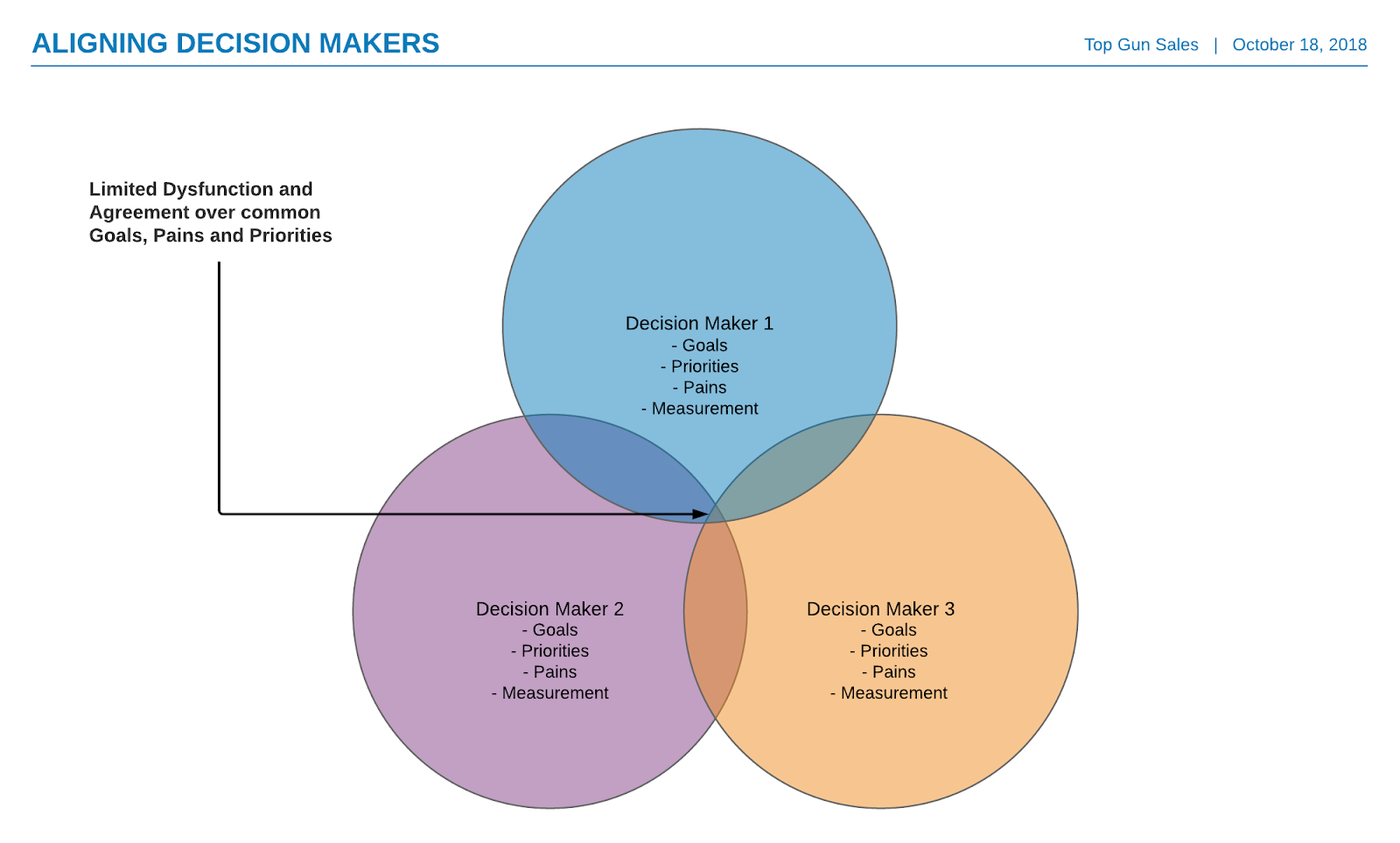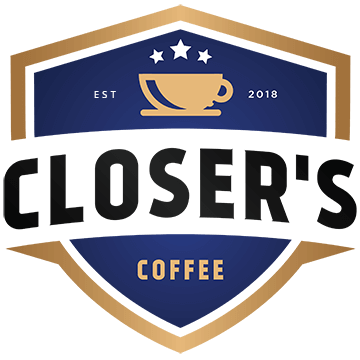Understanding the buyer’s journey in detail is one of the crucial building blocks many sales leaders overlook (or skip entirely) when they are building out their sales process.
Sales teams usually jump straight into selling and marketing their value propositions without ever taking the time to take a step back and understand what the buyer is thinking, feeling and doing, during each step of their journey towards purchase.
As a result, sales reps tend to lose focus on the buyer’s needs and deliver a product-centric pitch that’s all about “me” instead of being about the buyer.
If your product is incredible, these pitches can still work, but you’ll often find the majority of deals getting stuck in your pipeline and asking yourself – “Why won’t they just close already?”:
The purpose of this article is to help you take a step back – learn “why” the buyer’s journey is important to understand and help you identify ways to accelerate buyers through your sales process and close more deals.
What is the Buyer’s Journey and Why is it Important?
The buyer’s journey is typically defined as “the general steps through which a buyer progresses as they move closer to purchasing a product” – The Sales Acceleration Formula.
As a best practice, when building your sales organization – the buyer’s journey should always come first and creating your sales process comes second. Think about the buyer’s journey as the “train track” and the sales process as the “train” on the track, following the buyer each step of the way.
Sticking to this sequence of events will help you:
- Identify when buyers need more support and determine if and who from your team should get involved – Sales, Marketing, Social, Product, Customer Success, etc.
- Uncover when other buyers, within the buying group are getting involved with the buyer’s journey.
- Prioritize the overlapping goals, priorities, and pains of the buying group during the sales process to mitigate dysfunction.
But ultimately, understanding your buyer journey will help your sales team effectively generate Widespread Support for your product within the buyer’s organization, which is the primary driver of buyer decisions according to The Challenger Customer.
The book goes on to explain, that in today’s economy, an average of 5.4 people get involved in the decision-making process and operate as buying groups instead of individual buyers.

The size of the buying group will also fluctuate depending on how complex your solution is and how expensive it is to buy – both factors will require more or less buyers signing off on the decision.
Symptoms of dysfunction are usually the best indicators that your buyer journey and sales process are misaligned and can look like any of the following scenarios:
- Deals getting stalled in the pipeline, because the buying group cannot agree.
- ‘Good enough’ decisions being made, rather than buyers selecting the best solution.
- Waffling over price and/or multiple product feature requests attempting to accommodate every buyer in the buying group.
- Buying groups becoming frustrated and no decision being made.
If you’re frequently encountering any of the above – you should revisit your buyer journey, because your sales messaging likely creating dysfunction within the buying group or you’re not accounting for other buyers within the group influencing the decision.
Understanding The Buyer Journey Phases
Based on how complex your product is and the type of buyer you’re targeting, you’ll likely want your sales team getting involved earlier in the buyer’s journey for high-value enterprise clients and later for lower value small business clients..
At a high-level, the buyer’s journey is typically broken down into three phases that are outlined below. As you work through them, start thinking about how your sales team is currently supporting the client and what might they be doing better.
PHASE 1 – Problem Education
During this phase, the buyer may or may not know they have a problem or an opportunity within their business. As a result, they also do not fully understand the full scope of their problem/opportunity and have limited knowledge about the solutions that are available to them.
The buyer’s focus during this phase is primarily on learning as much as possible about their potential problem or opportunity to answer – “What is it and how do I solve it?”
In order to support the buyer during this step, your sales and marketing teams should be focused on CHALLENGING the buyer to look at their business differently and provide the necessary content to help the buyer scope how big or small the problem or opportunity might be.
This can be achieved through various methods like creating content, blog posts, outbound prospecting, cold calling, creating commercial insight, etc – to encourage the buyer to LISTEN and CARE about what’s in front of them.
Potential Buyer Feelings at this Step: anxious, stressed, unaware, confused, suspicious
PHASE 2 – Solution Research
At this step, the buyer has clarified and defined that they have a problem or opportunity that is worth investing more time and effort into better understanding.
As a result they are beginning to evaluate multiple solutions and narrow down potential options that may help them reach their goal or solve their problem. As part of their evaluation process, the buyer might be starting multiple free trials with different solution providers and/or going through product demos with your sales team.
Your sales process at this step should revolve around TEACHING the buyer about the extent of their problem/opportunity, how it’s impacting their day to day and why you are different.
Great articles like this one (Greatest Sales Deck Ever Created), highlight how companies have had success at this step of the buyer journey by highlighting big relevant changes in the buyer’s industry during sales pitches or product demos. In addition, talking about how there will be Winners & Losers in the near future is a great way to generate buyer FOMO (Fear of missing out) during sales pitches.
The messaging your sales team uses should be tailored to the buying group to limit dysfunction and demonstrate how your solution will maximize the opportunity and/or solve the problem they’re experiencing.
If your sales process can convey the following during this phase of the buyer journey, you’ll be in a good place:
- Why should the Buyer CHANGE?
- Why should the Buyer be considering YOU?
- The pain of staying the same is worse than the pain of change.
Potential Buyer Feelings at this Step: excited to try new solutions, overwhelmed by the problem or frustrated/anxious about how much change is involved.
PHASE 3 – Solution Selection
Congrats – if the buyer has made it to this phase, they’ve identified your product or service as the most appropriate solution based on what they’ve learned from your sales team and their research.
The buyer’s focus now becomes more internal within their organization as they begin to evaluate:
- Do I have the necessary internal support from the other buyers in the group?
- How easy is it to purchase and implement this solution?
- Does it provide the best value for price?
- Am I confident I’ll get the necessary support from the solution provider?
It’s time for the sales team to TAKE CONTROL and support the buyer and the buying group internally by providing summary information, proposals, testimonials, facilitating conference calls, and aligning the buying group on common goals and/or pains to mitigate dysfunction.
Sales processes should be focused on streamlining the steps involved with purchasing your product, while the sales team also fishes for any remaining objections or misalignment within the buying group.
Reinforce why the buyer should be considering YOU and utilize urgency within your sales process so the buyer makes the change NOW rather than delaying the purchasing decision.
Remember – the pain of the client staying the same is worse than the pain of change.
Potential Buyer Feelings at this Step: mostly feeling excited they’ve found a solution to solve their problem or capitalize on a new opportunity, but may still be feeling anxious about the change involved.
Next Steps
Now that you understand the buyer’s journey you can use this framework to build your own. It will help you determine when your sales team should get involved, while you create your sales process and sales playbook.
It is crucial you provide these processes and tools to your sales reps so they can:
- Deliver powerful messaging that aligns the buying group on common pains, opportunities and goals.
- Follow a sequence of steps to successfully move buyers through each phase of the buyer’s journey.
- Predictably grow their pipelines and forecast correctly.
- Anticipate and handle buyer objections to close more deals.







